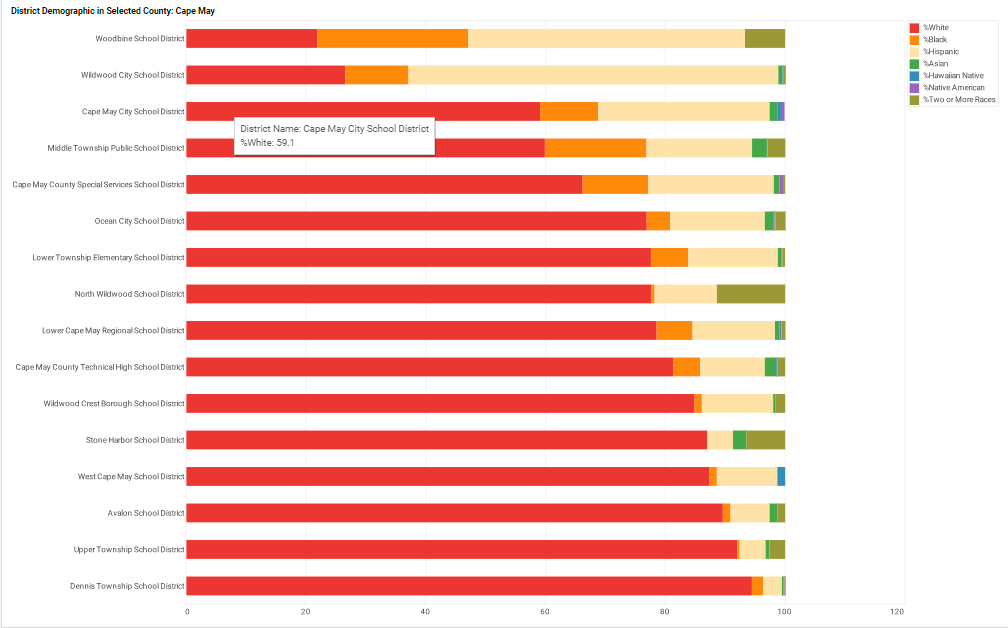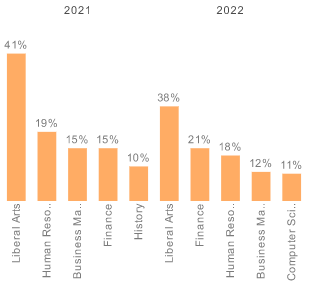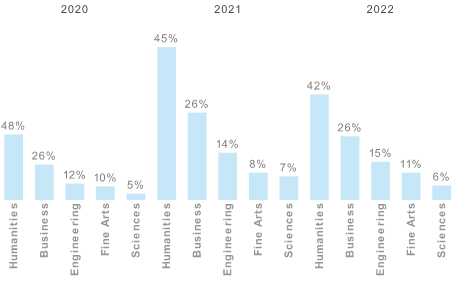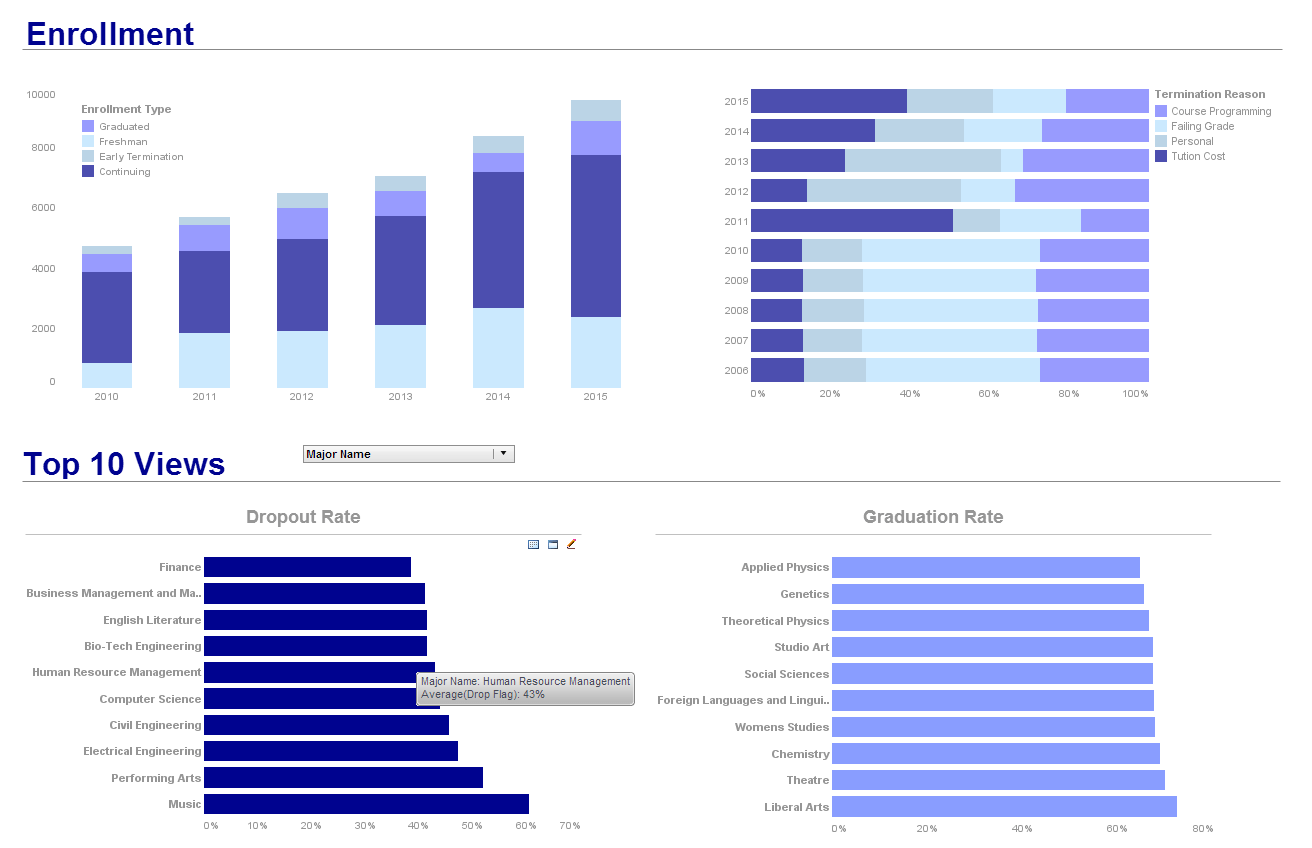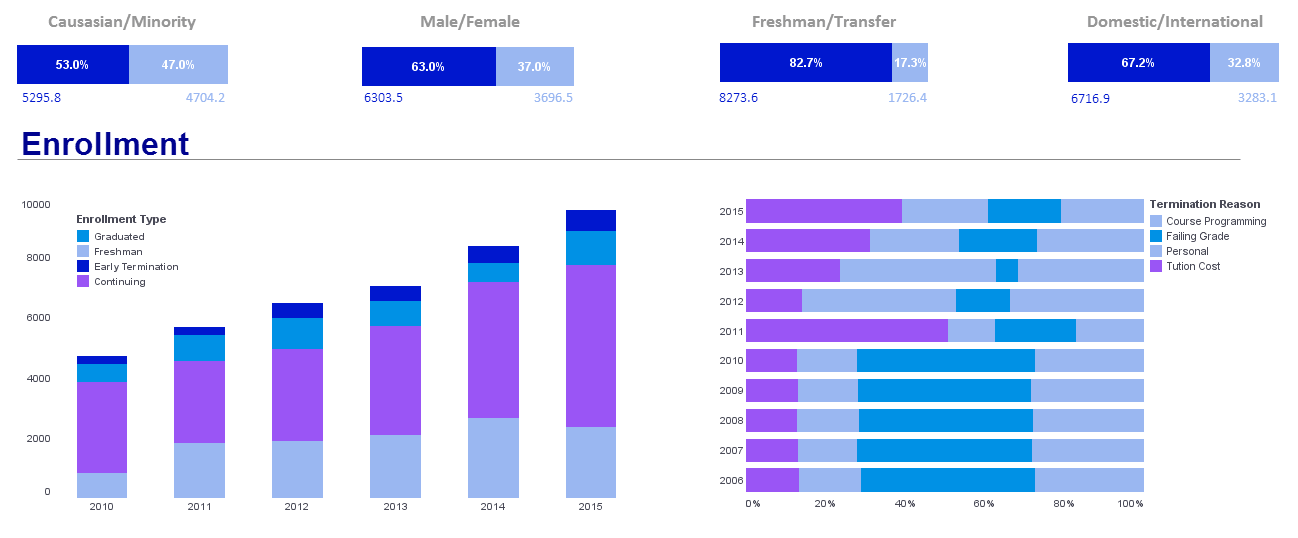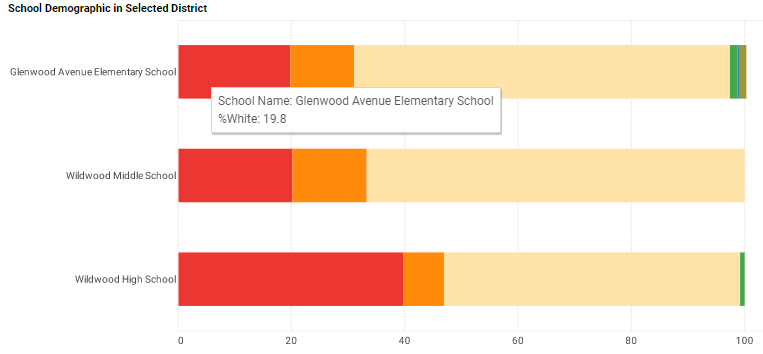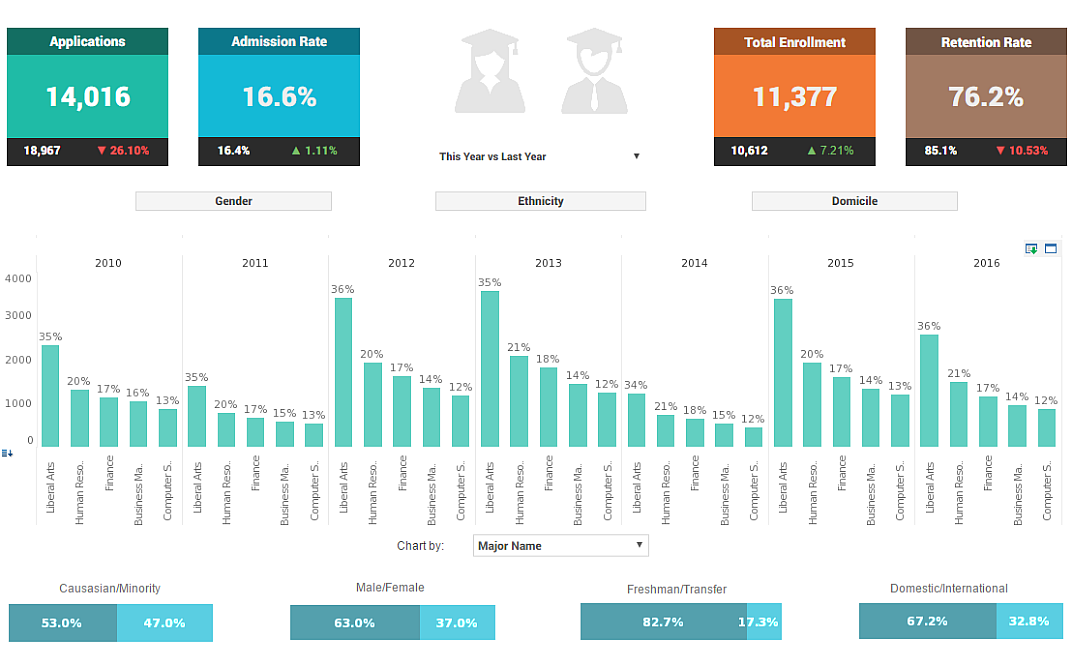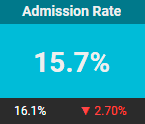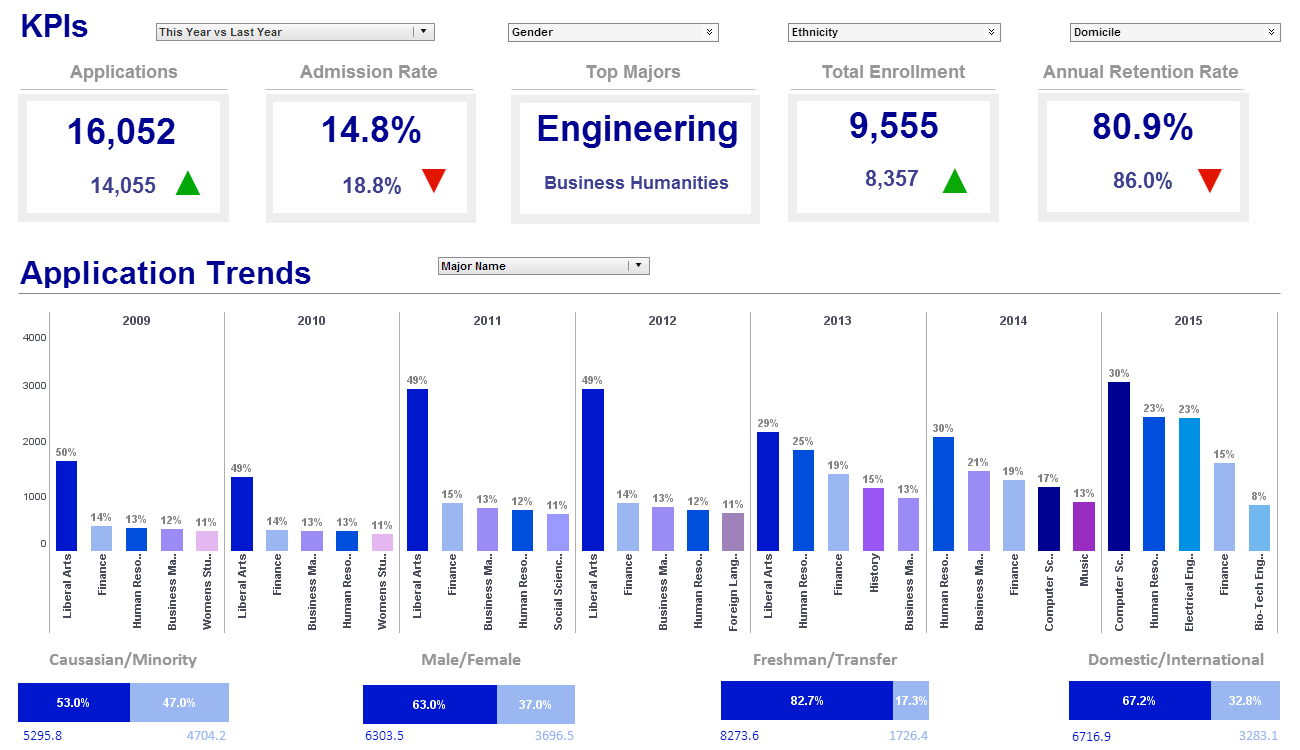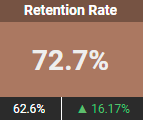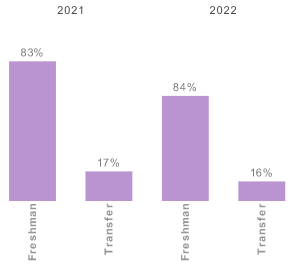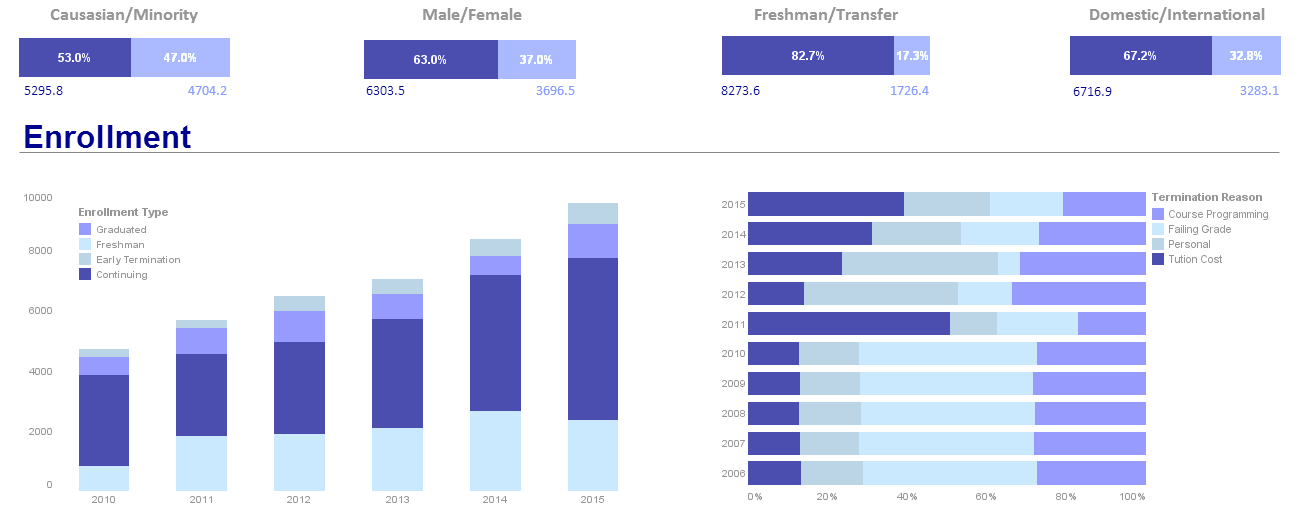How Improved Intelligence Can Push the Education Sector Forward
Using business intelligence applications to improve education.
Teaching people skills, competencies, and life lessons that align with their aims, goals, and personal beliefs is vital.
The educational sector has seen many changes over the past few decades. In recent times especially, digital technologies have become meshed with educational practices to deliver experiences that transcend the traditional classroom.
Not only are students of all ages and backgrounds beginning to benefit from innovation in the educational sector, but by adopting live BI dashboards or applications, institutions are improving their operations while delivering their curriculums in a way that meets their students' needs.
Here, we look at the rise of EdTech and digital transformation in the sector and consider how improved intelligence can improve the sector further.
| #1 Ranking: Read how InetSoft was rated #1 for user adoption in G2's user survey-based index | Read More |
The continual rise of Edtech
When exploring improved intelligence in the educational sector, it's important to look at the role EdTech plays in driving continual innovation.
Before we continue, here's a practical definition of EdTech:
EdTech-or education technology-is a branch of digital technology that focuses on the development of tools, applications, and processes dedicated to improving the learning experience both inside and outside of the classroom.
In addition to the introduction of learning applications or platforms and tablets into the classroom (and for distance learning), EdTech also encompasses the adoption of live dashboard systems to help institutions squeeze more value from their data.
EdTech has seen a sharp rise in the past decade, propelled further by the recent pandemic.
A definitive report on EdTech shows that:
- 80% of educators believe that EdTech enhances learning
- 79% of teaching professionals view edTech as a concept that will help increase performance
- 90% of people within the sector believe that education and technology should be intertwined
From virtual learning platforms and immersive learning experiences to data analysis technologies, digital curriculums, and beyond, EdTech is making a colossal impact in the educational sector. As digital transformation continues to rise within the sector, a rising number of institutions will become data-driven, improving their processes in many key areas.
 |
Read the latest news about InetSoft's user friendly BI software and customer successes. |
How improved intelligence is enhancing education
Improving intelligence within the sector will give institutions, from kindergartens to colleges, the insight to understand their students better while providing the tools, technology, experiences, and formats that result in real success, both personal and professional.
Taking the framework of a business intelligence application, educational institutions can adopt a data-driven mindset. The data-driven institution can leverage the insights available at its fingertips to enrich its offerings, improve its course content, and boost its retention rates.
When educational settings work with visual data analysis technologies, innovation will blossom, and every aspect of the institution will begin to move to the beat of a digital drum. To put this notion into perspective, here are four key benefits of improved intelligence in education.
Security
Schools are the second most frequent victims of ransomware attacks. By working with data intelligently, you will gain the visibility to identify anything unusual within your operations.
Plus, keeping EdTech-based platforms and applications updated will help to fortify your systems from cybercrime and protect your data, reducing the risk of potentially devastating attacks.
Educational value & flexibility
Getting under the skin of your students' demographics, needs, and preferences will ensure you make informed decisions on the tools you roll out across your institution.
Providing the right platforms and apps will give your students greater flexibility in how and when they tackle their assignments or projects while adding a personal touch to the learning experience.
Offering a multitude of learning mediums (the kind that are welcome and relevant to your students) will make the educational experience more fun, rewarding, and engaging.
Read more about InetSoft's in-memory database technology to learn how it works and what its advantages are over a pure in-memory solution. |
Operations
Much like corporate or commercial businesses, educational settings can benefit greatly from a visual, data-driven dashboard system. Business intelligence-style applications help institutions understand how to make their various operations more efficient, improving general outcomes and reducing unnecessary costs. They can also serve to measure student performance.
This educational dashboard system example includes a balanced mix of visual key performance indicators (KPIs) geared towards tracking student performance across a wealth of departments, subjects, and demographics.
Armed with this information, it's possible to understand the areas or subjects where your processes or curriculums are driving success and the areas that are suffering.
You can drill down into potential issues and make strategic improvements to specific processes while gaining the level of intelligence required to meet your students' educational needs.
Institutional efficiency & growth
Utilizing intelligent dashboard software, as well as EdTech tools or platforms, will help educational institutions of all varieties make consistently value-driven decisions. This will improve efficiency and lead to institutional growth.
Saint Louis University, for instance, wanted to boost enrollments and improve how it targets new students. To do so, the institution used data analytics to identify three recent years of graduating classes, pinpointing the graduates with the highest levels of satisfaction across dashboard software KPIs.
After conducting some analysis, Saint Louis University discovered that 80% of the most satisfied graduates fell into the categories of STEM, business, and healthcare. With this demographic and satisfaction-based information at its disposal, the university targeted potential students in relevant geographical areas with messaging centered on their most valued subjects.
This intelligent data-driven approach resulted in some of the biggest freshman enrollment rates in the university's history, as well as a boost in graduation rate.
Examples of EdTech in the education sector
It's clear that EdTech, digital transformation, and data analytics are transforming the education sector for the better.
Data-first internal cultures, coupled with tools that promote flexible, tailored learning models and migrate away from rigid, one-size-fits-all classroom methods, are not only helping institutions thrive financially and logistically but also ensuring that their curricula are inspirational, inclusive, and tailored to all.
Here are three edTech approaches that demonstrate the practical value of embracing digital technologies when teaching skills and imparting wisdom in educational settings.
 |
Read how InetSoft was rated #1 for user adoption in G2 Crowd's user survey-based index. |
Gamification
Gamification is a powerful EdTech concept. It involves using digital technologies to transform parts of the curriculum or learning experience into engaging tasks or games with micro plots or incentives.
Gamification is a powerful tool for connecting early-years students with certain learning concepts or subject matter. It's also becoming an increasingly effective way of assessing and engaging senior students in universities or colleges.
Immersive learning
In the digital age, immersive technologies such as virtual reality (VR) or augmented reality (AR) are becoming an increasingly impactful means of placing students in the heart of educational narratives or real-life scenarios to make the learning experience more meaningful.
With platforms like Google Earth VR and Google Expeditions becoming a genuine part of the consumer consciousness, more educational settings are using these platforms to take their educational offerings to a whole new level.
Coupled with the use of visual dashboard software, immersive learning allows educational institutions to measure the success of their immersive learning efforts and keep improving them based on student success or satisfaction levels.
Data dashboards
As mentioned earlier with our educational dashboard software example, adopting a data-centric approach will empower you to identify trends and make informed decisions based on every facet of your institution's internal activities and educational content.
A rising number of school districts leverage district-wide student information systems to monitor and benchmark student performance while tracking the impact of the educational process.
These systems require a data reporting solution that can handle multiple users, efficiently present large data sets, protect data privacy, and tie everything together for consistent success, evolution, and growth.
 |
View the gallery of examples of dashboards and visualizations. |
Welcome to the future
"Education is the passport to the future, for tomorrow belongs to those who prepare for it today." -Malcolm X
Working with educational institutions, including Carnegie Mellon University, Georgia Tech, and Florida International University, our cutting-edge dashboards have helped monitor course completion rates, track graduate rate demographics, and provide student-to-faculty ratio analysis.
As we move away from rigid methods of learning and exclusive educational content and towards a flexible, fulfilling, and personalized future, using your institution's data to its optimum efficiency is critical.
If you're ready to adopt a data-driven mindset, maximize your institution's efficiency, and give your students exactly what they need, working with dashboard software is the way forward.
To find out more about our data-driven solutions, get in touch. And for additional BI enlightenment, read our exploration of the ever-expanding role of machine learning (ML) in business intelligence.
